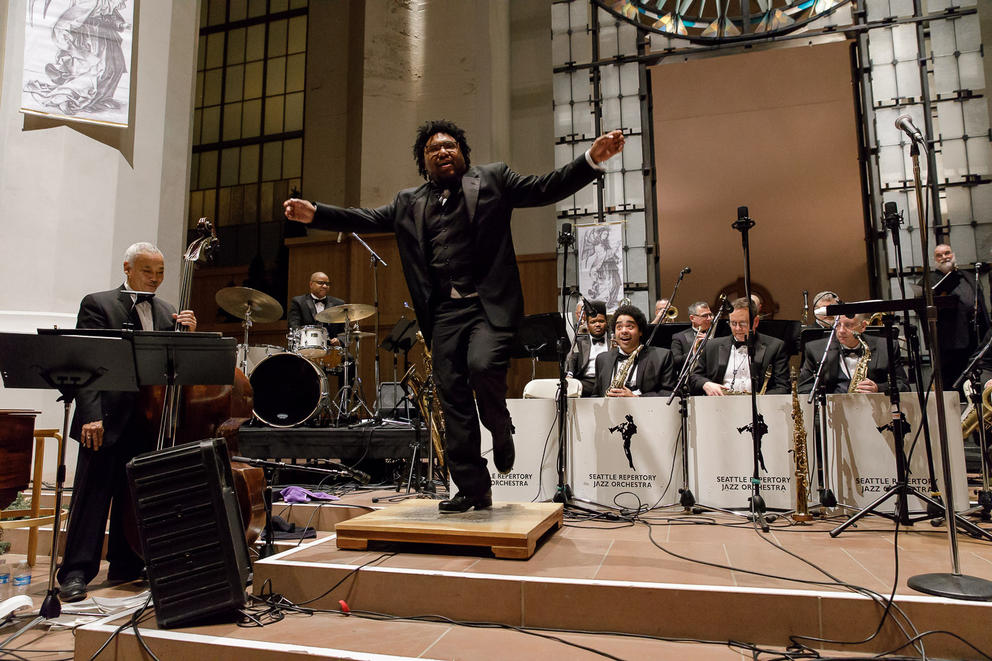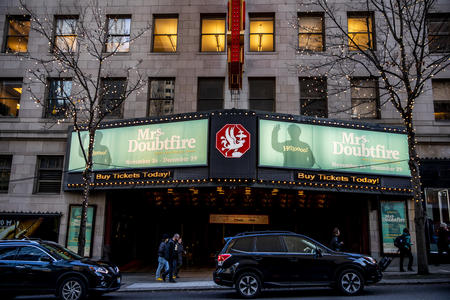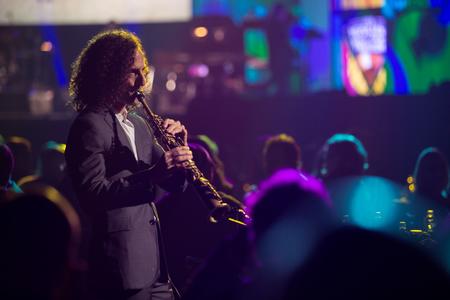A Silent Night — Silent Disco Party
When, in 1816, a young Austrian priest wrote the words to the now-legendary Christmas carol Silent Night, he almost certainly could not conceive of what would transpire roughly 203 years later at Barboza on Capitol Hill: a “silent disco” party named after his song. From the outside, at least, this will be a mostly silent affair. Using individual headphones, revelers can listen to ’90s and early 2000s hits, EDM, hip-hop and R&B songs. The external speaker system remains quiet — and the people dancing in apparent silence make for a funny scene for anyone passing through sans headphones. But inside eardrums the music will be bumping, and the party will likely not be very calm. Or holy. –M.V.S.
If you go: A Silent Night — Silent Disco Party at Barboza, Dec. 19. ($5-10)
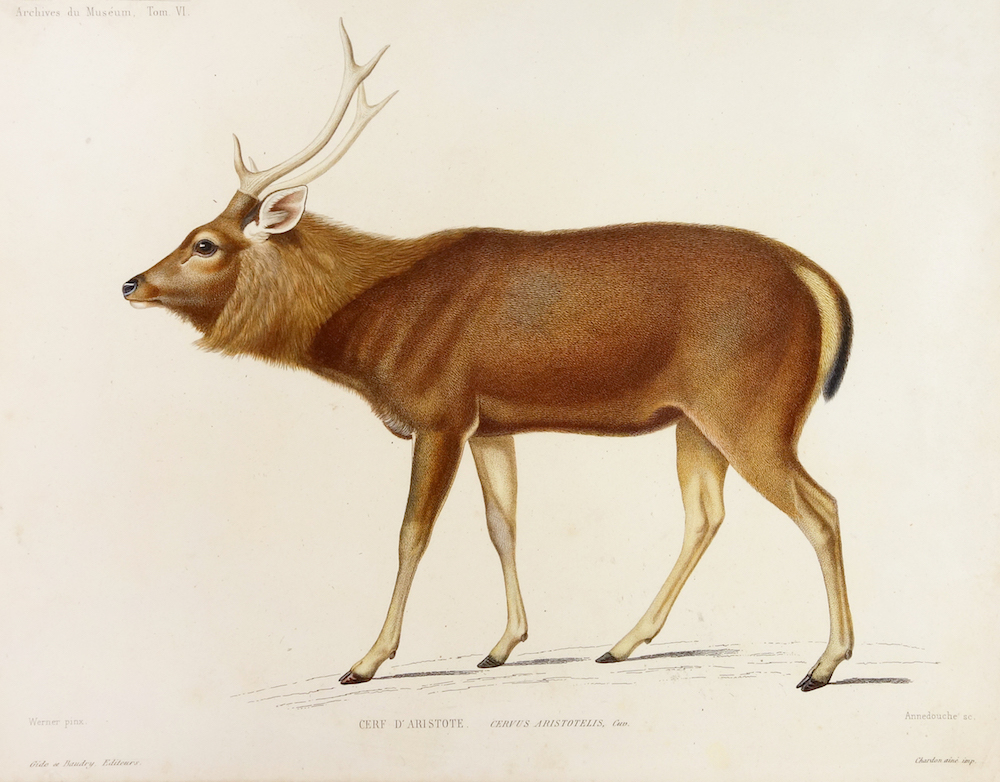
Natural History: Botanical and Naturalist Subjects
It’s one of those things you just know — or feel — but it’s nice to get some scientific backup on: Looking at art is good for your brain. And given that some scientific studies suggest interacting with nature helps us feel more relaxed and happier, looking at art that depicts nature’s delicate intricacies must at least net some benefits, right? You’ll be able to test our hypothesis for a few more days at Davidson Galleries in Pioneer Square. Natural History: Botanical and Naturalist Subjects is an exhibit of 18th, 19th and early 20th century engravings, hand-colored lithographs and woodblock prints featuring flora and fauna, which reveal how scientific illustrations can generate astonishing and, perhaps, even brain-boosting art. –M.V.S.
If you go: Natural History: Botanical and Naturalist Subjects at Davidson Galleries, through Dec. 21. (Free)
Longest Night: Solstice Ceremony
How to celebrate the longest night of the year? If you ask the Northwest Film Forum: Throw a party that feels like a waking dream. The Capitol Hill nonprofit dedicated to all things independent film catapults visitors into “total spiritual recalibration” with live ambient and techno music by artists from the synthesizer-heavy troupe Modular Seattle and Los Angeles’ Dustin Wong, known for trippy music based on cyclical guitar loops. It’s a long night, which mandates lots of activities: a short film program (curated by former NWFF Executive Director Courtney Sheehan); a moving meditation; mindful breathing sessions set to music; a (clothed) sound bath; birth chart readings; and an audio cassette taping station (remember tapes?) to record recollections of past dreams. Sounds like a solstice dream ticket. –M.V.S.
If you go: Longest Night: Solstice Ceremony at Northwest Film Forum, Dec. 21. (Sliding scale admission: $15-$35)
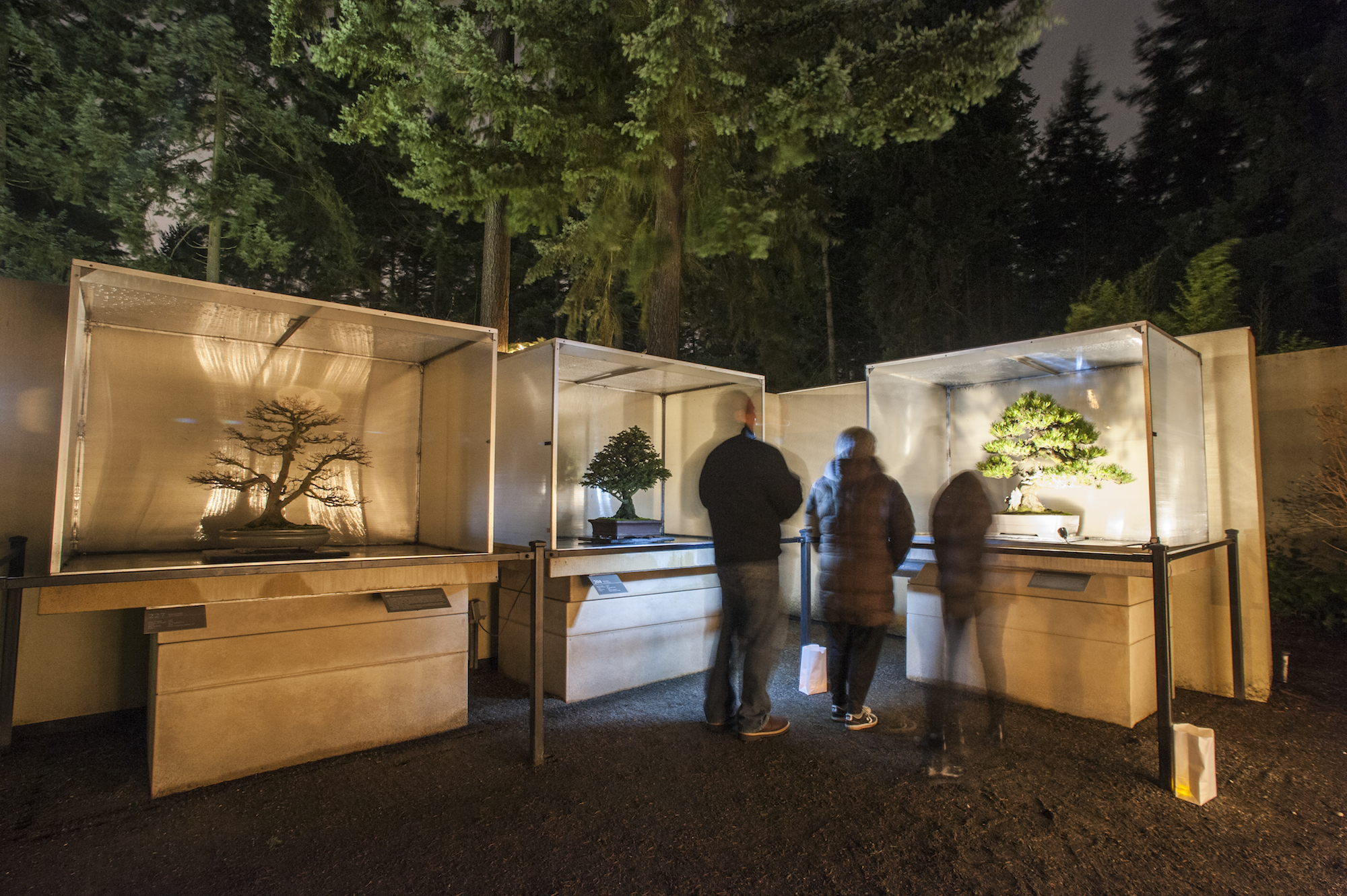
A Bonsai Solstice
No, the diminutive bonsai trees aren’t strung with itty-bitty ornaments. For this annual solstice celebration at the Pacific Bonsai Museum, the tiny topiaries are cast in a soft light that emphasizes their particular, ancient majesty. Visitors are invited to an early evening stroll through the woods and along luminaria-lit pathways to view the exquisitely pruned trees in this fascinating, all-outdoors museum. Also at the event: live acoustic music by guitarist Leon Christian, custom poems written onsite by local poet Alexandria Maureen Beget-Manalo, plus warming beverages. Bundle up and BYO flashlight for the short, forested walk from the parking lot to the museum, and walk among trees big and small as the hemisphere turns toward longer days. –B.D.
If you go: A Bonsai Solstice at Pacific Bonsai Museum, Dec. 21, 4-7 p.m. (Free)
Compline Choir
Solstice weekend is a good time to take account of the past year and look ahead to the next 12 months (amid crazed last-minute holiday shopping, of course). For a meditative break — an aural reboot of sorts — try the soft, calming voices of Seattle’s Compline Choir. Since 1956, the all-male singing group has been performing late evening services amid the resonant acoustics of St. Mark’s Episcopal Cathedral in north Capitol Hill. (Last summer, while the male choir was traveling, the first-ever female choir took its place on a few Sunday evenings — a novelty we hope becomes a standard rotation.) People of all faiths (or none at all) gather in pews or lie on the floor to immerse themselves in songs that have been sung by monks for centuries. (Think a capella works in the style of Gregorian chants.) Consider it a choral cleanse for the brain, to clear your mind of last year’s clutter and gift yourself time for peaceful contemplation. –B.D.
If you go: Compline Choir at St. Mark’s Episcopal Cathedral, Dec. 22 at 9:30 p.m. (Free)
James Turrell Skyspace: Light Reign
If you want a break from the frantic hubbub of the season (and you don’t have time to set up a yurt in the woods), head to the Henry Gallery for an immersion in calm and quiet. Built as a permanent, site-specific installation in 2003, the James Turrell Skyspace: Light Reign is an excellent example of work by the world-renowned master of light-and-space environments. (And unlike the Roden Crater piece he’s been working on since the 1970s, this one is finished!) Here, Turrell works his magic by way of an elliptical room with an ovoid view of the sky. A singular, circular wooden bench offers plenty of positions to take in the simple surroundings, and to see how the room shape shifts from different perspectives. The bottom half of the walls are wrapped in warm wood, the top is pure white, giving the sense of a sacred space — though any adornments will come from your own mind. Light Reign serves as a space to prioritize meditation over merriment. –B.D.
If you go: Skyspace at Henry Art Gallery, permanent installation, closed Dec. 23-25. ($10)
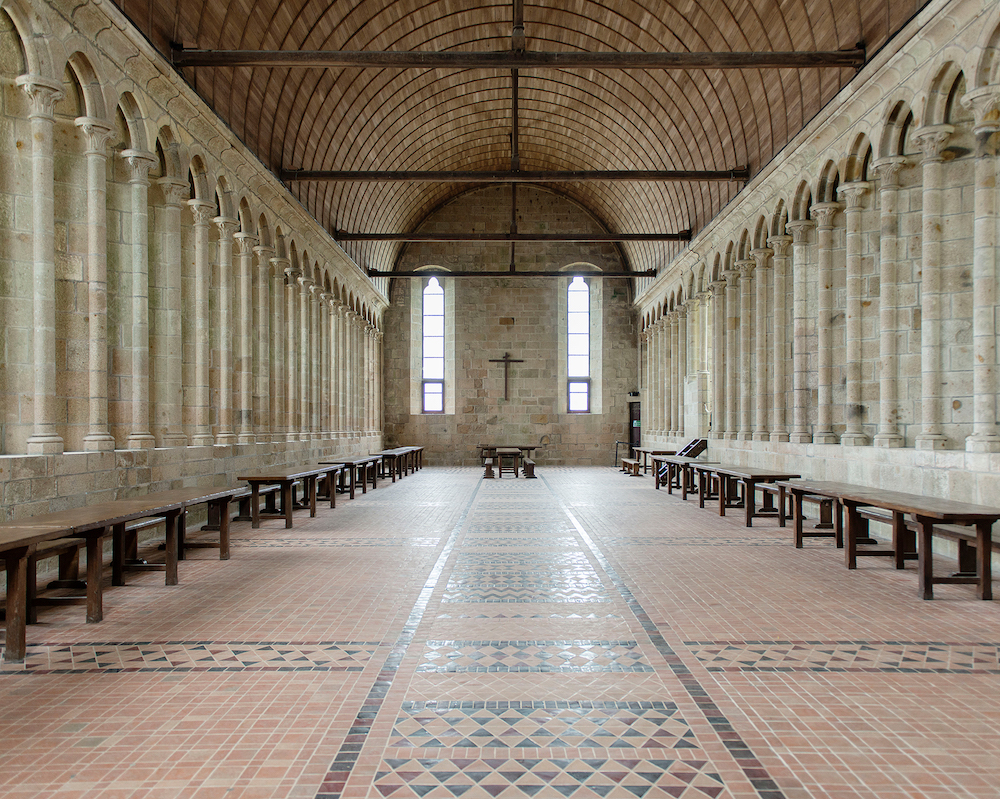
Escape to a medieval monastery or Saturn’s moon
If holiday mayhem has you wanting to run away from it all, consider a couple new high-tech exhibits that offer quick escapes to far away realms. One place the cloying ring of “Jingle Bells” can’t reach you: a medieval monastery on a rocky isle in the waters off of Normandy and Brittany, in France. Mont-Saint-Michel, a new exhibit at the Museum of History and Industry, takes visitors on a virtual tour through the UNESCO World Heritage Site, thanks to Microsoft’s HoloLens mixed-reality technology and a stunningly detailed 17th century scale model built by Benedictine monks for Louis XIV (and shipped verrry carefully to Seattle). Strap on the goggles, explore the island and step inside the Romanesque-Gothic marvel. Still too close for comfort? At Pacific Science Center, Expedition Titan takes you straight to the moon — the ice volcanoes of Saturn’s largest moon, to be more precise. Hyperspace XR has created a mixed reality blastoff that lands visitors deep inside a cryovolcano, where you can explore the craggy landscape without a scrap of tinsel in sight. –B.D.
If you go: Mont-Saint-Michel at MOHAI, through Jan. 26 (closed Dec. 24 at 2 p.m., closed Dec. 25), ages 15 and up. ($16.95-$21.95) >> Expedition Titan at the Pacific Science Center, long-term exhibit (closed Dec. 24 at 3 p.m., closed Dec. 25), ages 10 and up. ($12-$15)

Exceptionally Ordinary: Mingei 1920 - 2020
Japanese art critic and philosopher Yanagi Sōetsu (1889 –1961) believed that folk art should be the true barometer of a country’s culture and quality of life. Fine art, he wrote, is “made by a few for the few,” while folk arts, made “by the many for many, are a truer test.” Sōetsu put his democratic arts philosophy into practice by founding Mingei, an arts movement that aimed to elevate the handmade, the egoless and the vernacular. In other words: utility over ornament, vases over paintings. Just ahead of the movement’s centennial, Seattle Art Museum displays Mingei’s principles by showcasing beautifully crafted, early 20th century paper stencils (used for dyeing fabric), plate ware from the 1700s, storage jars, robes, teak sculptures and sake bottles — simple objects that impress without even trying. –M.V.S.
If you go: Exceptionally Ordinary: Mingei 1920 - 2020 at Seattle Art Museum, through Nov. 8, 2020. (Pay what you can)
Duke Ellington’s Sacred Music
You could argue that prolific jazz composer, pianist and orchestra leader Duke Ellington (1899 - 1974) has done more than a few things of great significance. But the most important thing Ellington ever did, according to the maestro himself? Writing Sacred Music. Ellington composed the music late in his career, bringing together strands of big band jazz, gospel, classical and choral, blues and tap. His intention was for the concert to be performed in churches and cathedrals but not to be considered part of the liturgy. For three decades, local jazz nonprofit Earshot Jazz has brought Ellington’s Sacred Music to the stage around year’s end. The tradition continues with this 31st edition, performed by the Seattle Repertory Jazz Orchestra, with celebrated vocalist Nichol Veneé Eskridge, dancer (and saxophonist) Alex Dugdale, plus the Northwest Chamber Chorus. Sacred music, to be sure. –M.V.S.
If you go: Duke Ellington’s Sacred Music at Town Hall's Great Hall, Dec. 28 ($19 – $48)

